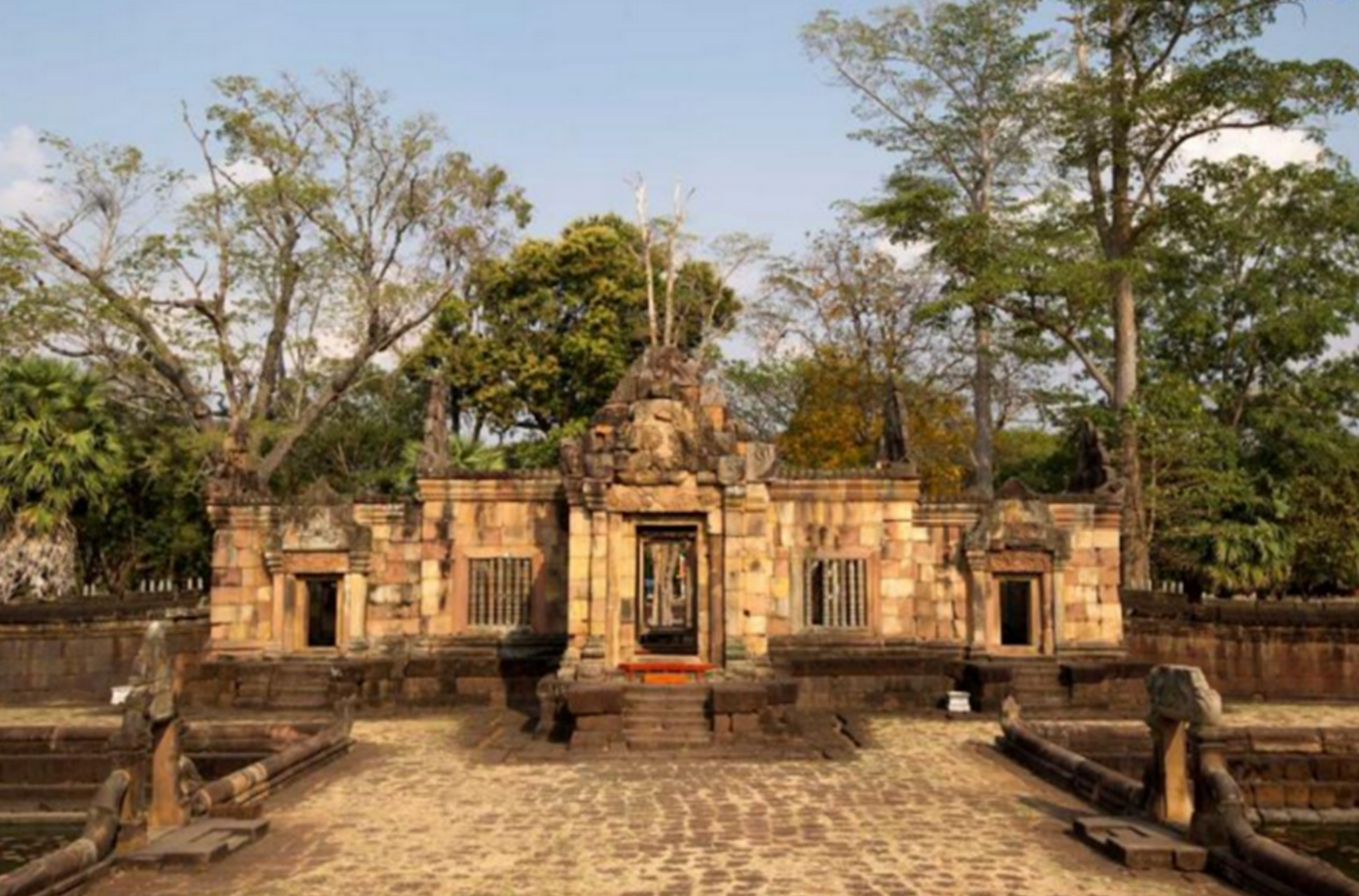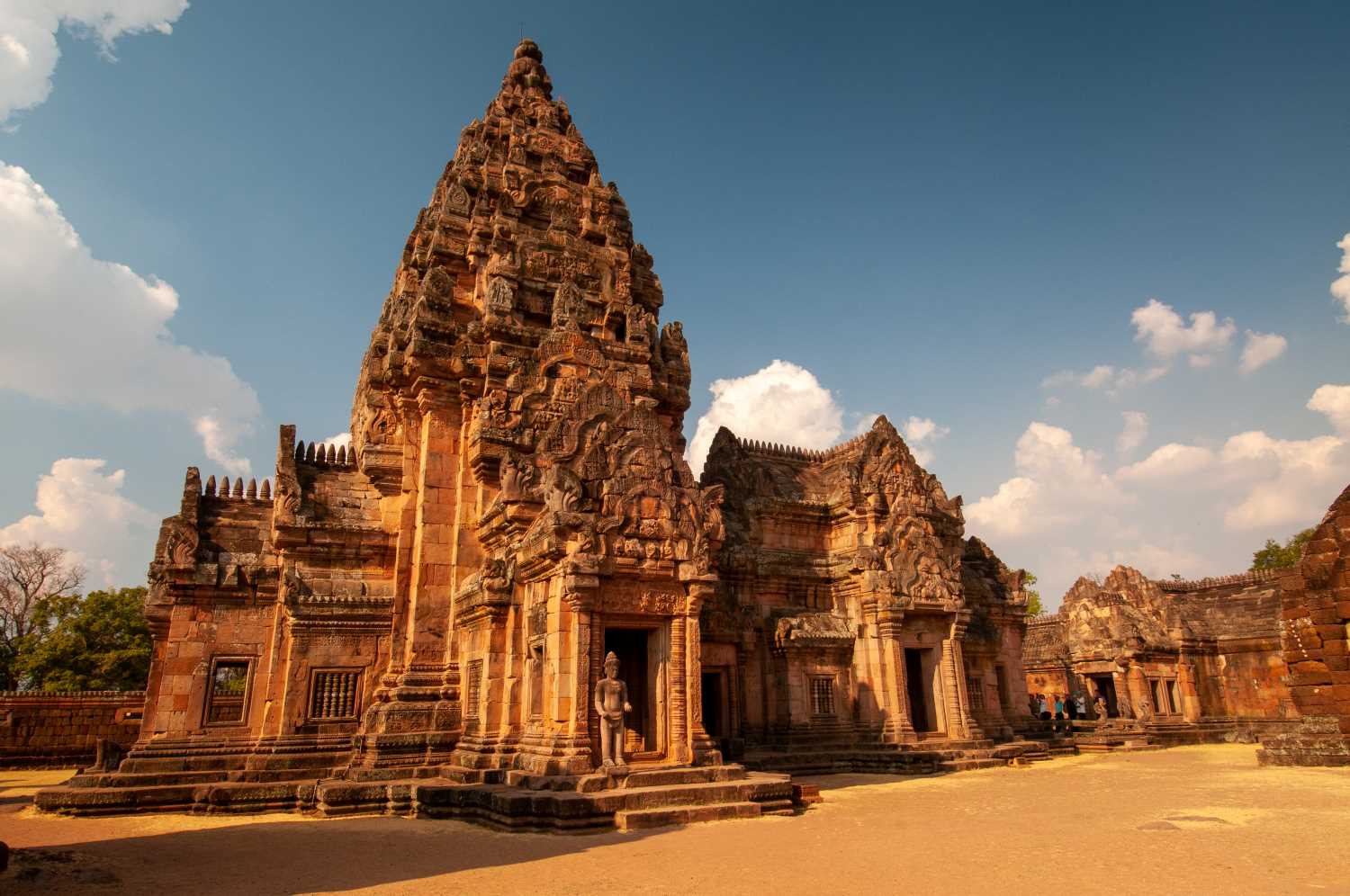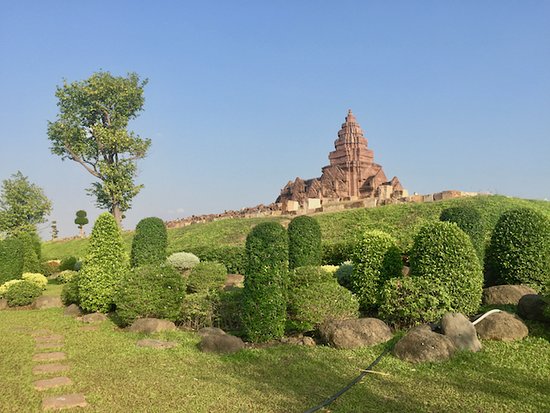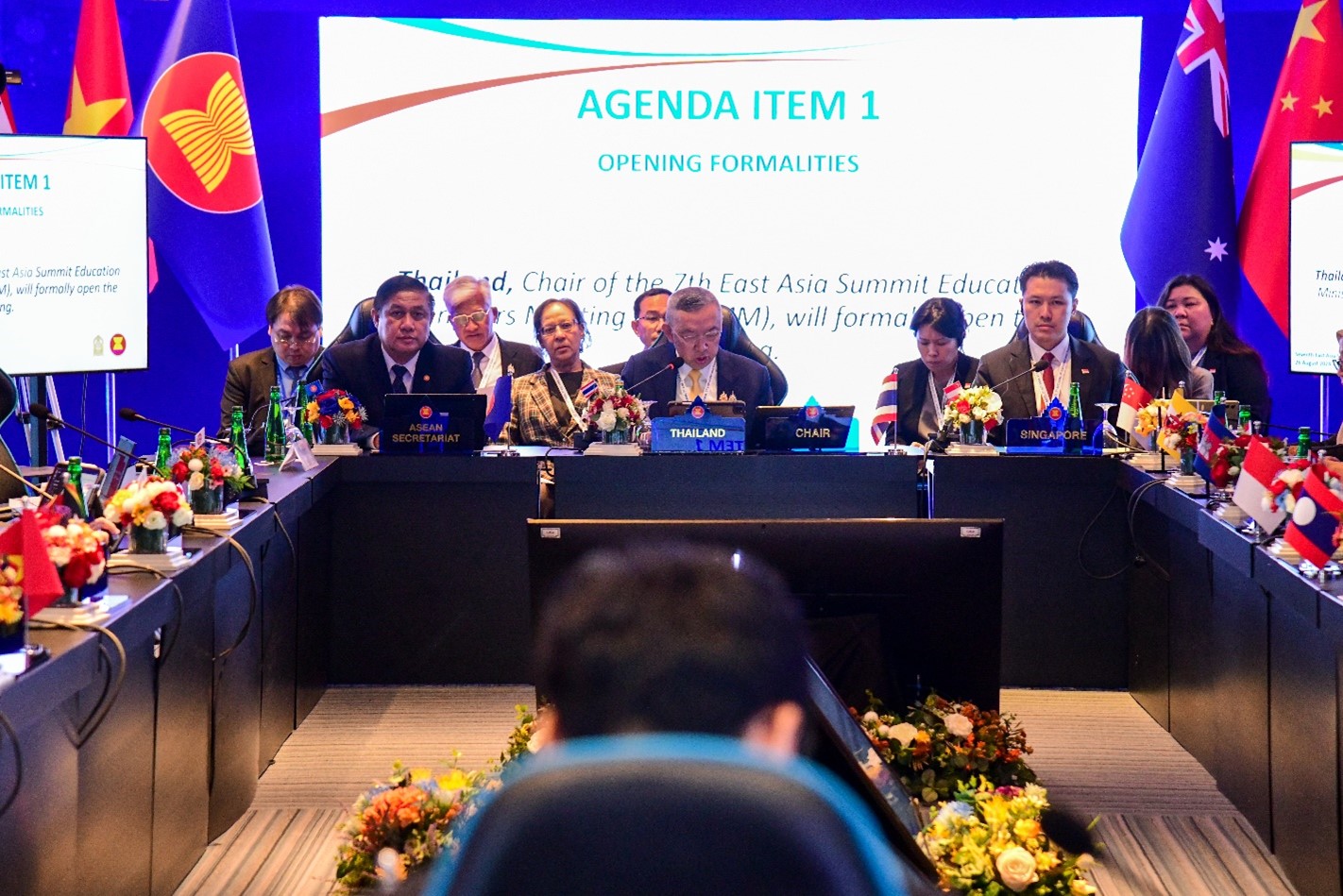
Located in Chorakhe Mak Sub District, Prasat Hin Mueang Tam is one of the Khmer sanctuaries with exceptional architecture. The architecture features the Baphuon style of Khmer art, which dates between 1007-1082, and mixed with the Khleang style, which dates from between 965-1012. Most of the bas-reliefs depict Hindu gods, from which it can be assumed that the sanctuary may have been built around the 10th – 12th centuries and used as a religious shrine for Hindus. The site comprises of five brick prangs built on the same laterite base: three in the front and two at the back. The principal and largest prang is located in the middle of the front row but sadly only the base remains intact, while the other four prangs are also in quite poor condition. Each prang has only one entrance in the east wall, with false doors lining the other three sides. The principal tower also has a front terrace. There have also been exciting discoveries made during the excavation which took place at the site. One being a lintel of the terrace carved into the shape of a god holding a water lily hovering above the face of Rahu and surrounded by male and female figures, which is believed to depict the wedding of the God Shiva and his consort Uma. The other is a pediment carved into a design of the God Indra riding on his Erawan elephant. They also found fragments of stucco relief used in decorating the base, indicating that these prangs were once beautifully embellished with stucco. The other four smaller prangs still have two lintels attached above the entrance doorways: one at the northern tower in the front row and the other at the southern tower of the back row. The lintels were carved to show the God Shiva, holding Uma on his lap and sitting on his bull Nandi, and God the Varuna riding a swan, respectively. The excavation also found the prang’s top piece, made from sandstone and carved into a lotus shape, falling around the prang’s base. There are two viharas in front of the prang complex, made from brick, facing the prangs on both sides, with each of them surrounded by a double wall. A long, narrow sandstone gallery forms the inner square wall, while the outer one is made from laterite. There are Gopuras (entrance pavilions) in all four directions at the exact positions of both divisions. Except for the inner one in the West, all Gopuras were made from sandstone, delicately carved into various designs such as pediments, lintels, and pilasters, depicting the story of the Hindu belief, foliage, and floral motifs. Between the inner and outer walls lies the location of a large platform made from laterite. The L-shaped barays (artificial ponds) at the four corners are in line with laterite blocks arranged in steps down to the bottom. The pool’s top edge is made from sandstone, featuring five-headed Nagas, all bare-headed, without ornaments, and with necks stretching at the baray’s corners.





